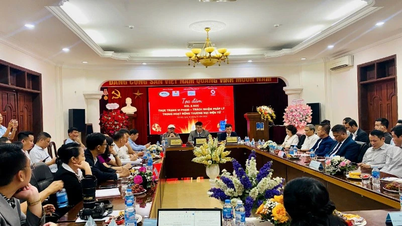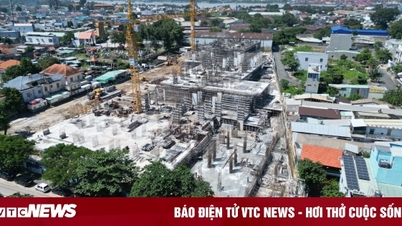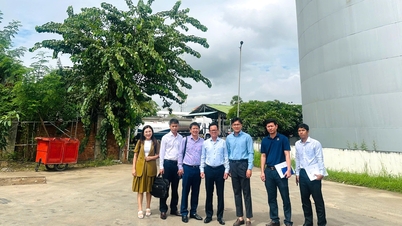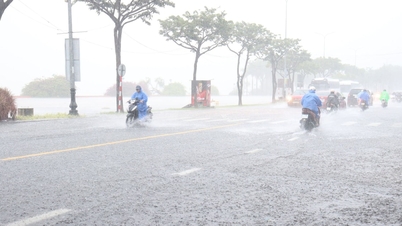Global climate change is contributing to an increase in extreme weather events: from heat waves and droughts to unusual storms that cause heavy rains and widespread flooding. Even the Sahara Desert and hot countries like Saudi Arabia have suffered prolonged flooding in recent years.
So what can we do to protect our homes and infrastructure? Over the past few decades, a cottage industry has sprung up that specializes in flood protection, offering solutions that go beyond sandbags.

From sandbags to fortified barriers: Floods force cities to find ways to protect heritage and homes. (Source: Rics)
Minimize damage as much as possible
Ian Gibbs MRICS – National Technical Director at Sedgwick International UK, Chair of DEFRA’s Flood Resilience Roundtable – said: “While loss assessors have always predicted increased flooding from winter storms, they now have to prepare for year-round flooding from heavy rainfall. The same goes for homeowners, regardless of whether they live near a river or the coast.”
“Insurers are not just looking for theoretical risk mitigation, they also need confidence that it actually works,” he stressed.
Traditionally, people have preferred resilience measures (which prevent or reduce water ingress) such as flood gates, flood barriers, and check valves. However, resilience measures – which help properties return to their original state quickly after flooding – are increasingly accepted because they require less maintenance and intervention.
In flood-prone areas, some experts say that instead of fighting the water, the damage should be minimized. Measures include: Placing electrical outlets higher, installing one-way valves to prevent backflow of wastewater, and using waterproof floors such as tiles. This will help clean up and resettle quickly when the water recedes.

Workers install flood barriers ahead of a storm in the US. (Source: Rics)
High-tech solutions
If traditional flood barriers seem simple, you might be interested in AI applications. The University of Sheffield (UK) has developed CENTAUR – an AI sewer management system that monitors sewer networks for spare capacity during storms. The system blocks free flow and directs water into backup channels to avoid combined sewer overflows.
CENTAUR operates in real time and has been successfully tested in Coimbra (Portugal) and Toulouse (France). However, the system has its drawbacks. If the sewer system does not have spare capacity, excess water will have nowhere to go.
Another system, LiDAR (Light Detection and Ranging), does not directly prevent flooding, but is an excellent tool for mapping and identifying areas at risk of flooding. It scans the terrain in detail, removing obstacles such as forests or buildings to make the simulation more accurate. LiDAR is now widely used in flood modeling, especially in floodplains or areas of land under construction pressure.
If you only need to protect one property, the German company Hochwasserschutz Reitthaler has created an automatic flood barrier: Buried underground, it detects unusually heavy rain and automatically raises itself 90cm to protect the structure.

River cities like Coimbra, Portugal are testing AI solutions to reduce the risk of flooding. (Source: Rics)
In urban areas, the greatest flood risk is standing water on hard surfaces. Permeable pavements look normal but allow rainwater to drain away quickly before it accumulates. This type of pavement can absorb hundreds of litres of water per square metre per minute, achieved by loosely packed granite that creates spaces for water to flow through, combined with a gravel layer underneath to increase drainage.
Ian Gibbs MRICS concludes: “There is no one-size-fits-all solution to flood resilience. The key is to get a qualified surveyor in place. Then develop a strategy that suits the property and its users – often a combination of resilience, resilience measures and higher levels of preparedness.”
Source: https://vtcnews.vn/cong-nghe-giup-con-nguoi-de-tho-hon-khi-song-chung-voi-mua-lon-ngap-lut-ar971109.html


![[Photo] Conference of the Government Party Committee Standing Committee and the National Assembly Party Committee Standing Committee on the 10th Session, 15th National Assembly](https://vphoto.vietnam.vn/thumb/1200x675/vietnam/resource/IMAGE/2025/10/15/1760543205375_dsc-7128-jpg.webp)
![[Photo] Many dykes in Bac Ninh were eroded after the circulation of storm No. 11](https://vphoto.vietnam.vn/thumb/1200x675/vietnam/resource/IMAGE/2025/10/15/1760537802647_1-7384-jpg.webp)

![[Photo] General Secretary To Lam attends the 18th Hanoi Party Congress, term 2025-2030](https://vphoto.vietnam.vn/thumb/1200x675/vietnam/resource/IMAGE/2025/10/16/1760581023342_cover-0367-jpg.webp)



























![[Video] TripAdvisor honors many famous attractions of Ninh Binh](https://vphoto.vietnam.vn/thumb/402x226/vietnam/resource/IMAGE/2025/10/16/1760574721908_vinh-danh-ninh-binh-7368-jpg.webp)


































































Comment (0)